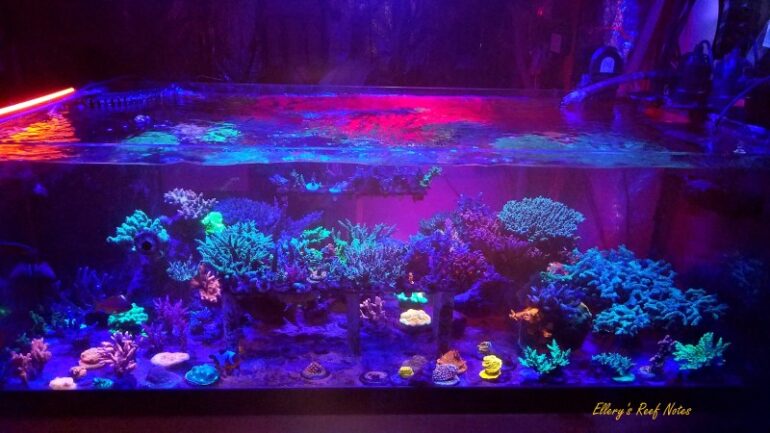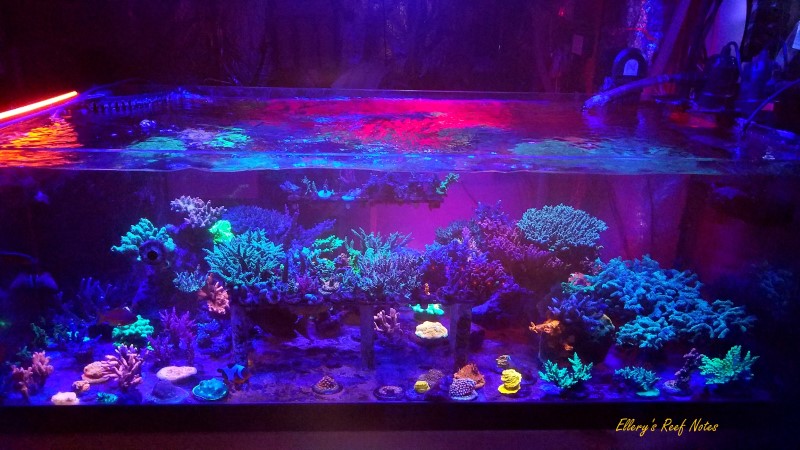
When you are a collector like me, you will eventually be buying a lot of small frags of corals due to the lower cost and availability of imported corals these days. The challenge will be to grow these little nubs to a collection of mature looking colonies. Just like vegetable gardening you need to prepare your yard and maintain it from pests, weeds, and diseases.
Goal:
To provide a non-competitive environment for corals to be able to fully encrust plugs without any pests or algae present.
Algae can smother corals and compete with them for oxygen, space and nutrients. Obviously if you can control the nutrient levels in the water to prevent algae from taking over that would be ideal but algae will appear in every system at some point in time so good to be prepared on how to deal with them.
Some nice examples of clean frags are below with no green algae. Coralline algae is ok since coral can encrust over those easier.
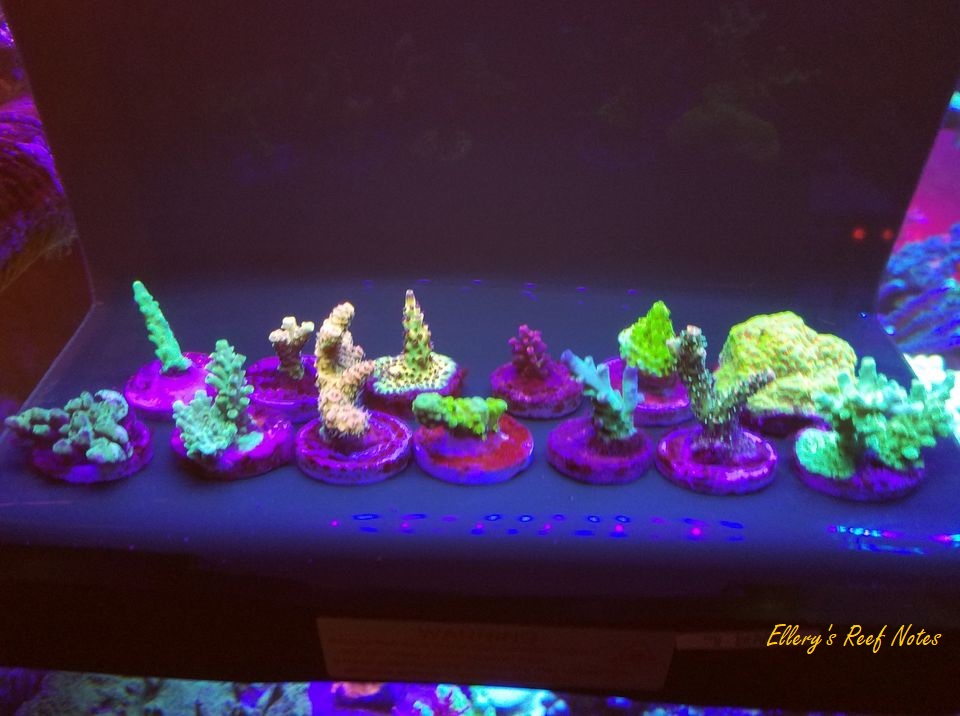
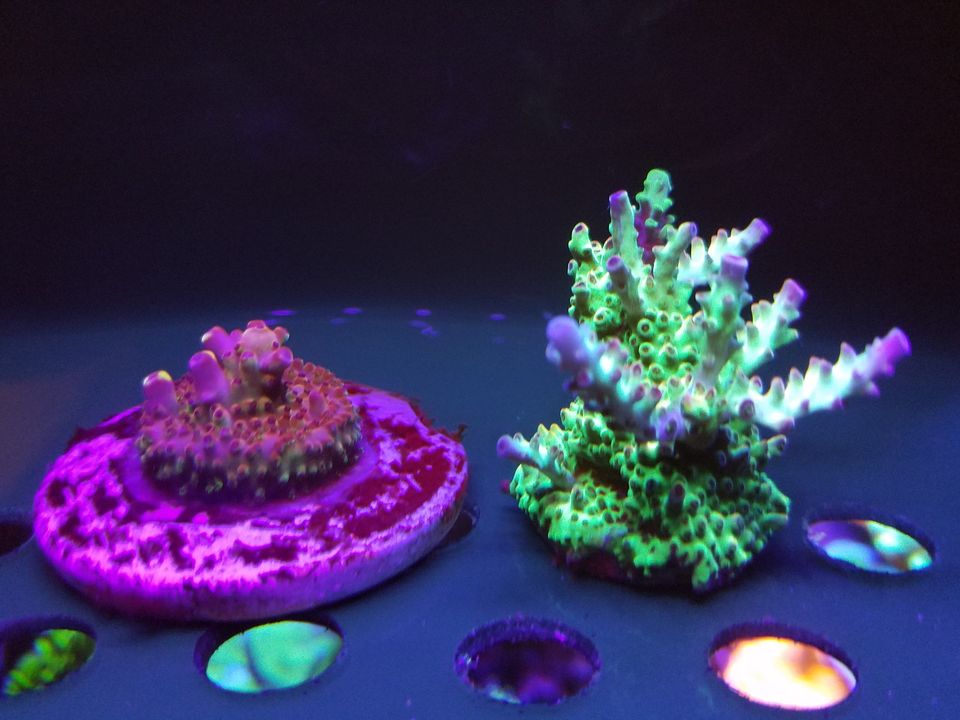
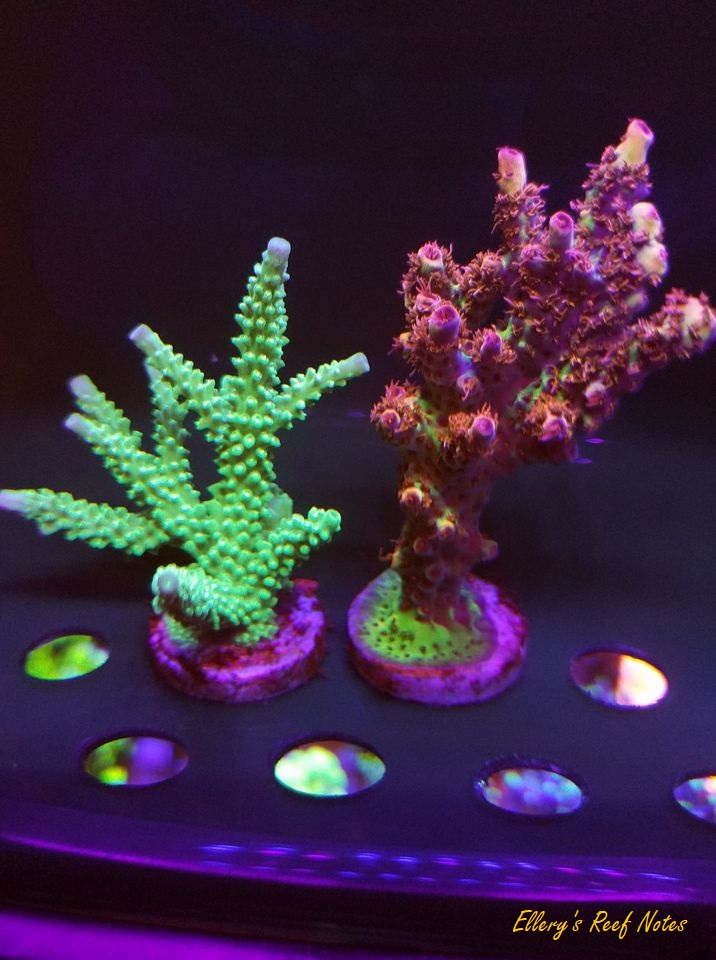
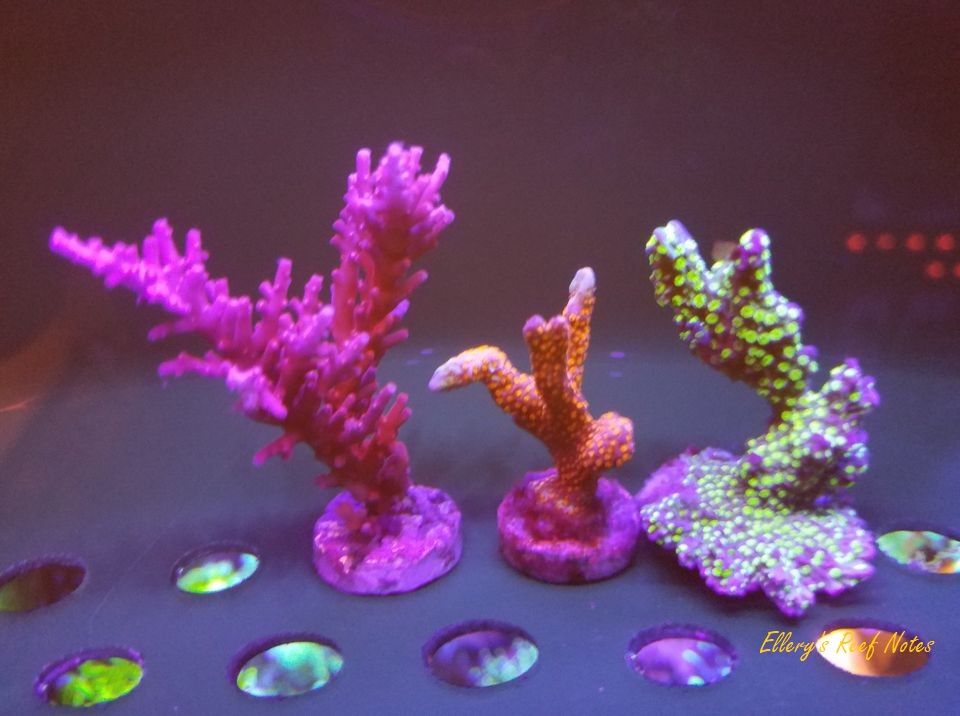
Basic Coral Gardening tools:
- Bone cutters (For trimming coral skeletons)
- Fine point tweezers (For removing algae and pests)
- Toothbrush (For cleaning surfaces)
- Frag Plugs/plates (For mounting frags)
- Dental pick set (For cleaning surfaces)
- Cyanoacrylate gel glue (For gluing frags onto plates/plugs)
- 3% Hydrogen peroxide (For oxidizing algae spores)
- 1 mL syringe dropper (For Hydrogen peroxide target application)
- Rinsing container (Rinsing frags treated with Hydrogen Peroxide)
- Razor blade or shears (For cutting soft corals)
- Nitrile gloves (For skin protection from palytoxin or other skin irritants)
- Turkey baster (For rinsing and flushing frags of pests and detritus)
- Mounted / lit magnifying lens or digital microscope (optional – For pest inspection)

Process:
- Remove frag from rack and and inspect under a bright light for algae, pests, detritus and dead skeleton.
- Remove large algae clumps and pests with tweezers.
- Scrape and brush algae film/detritus with toothbrush.
- Cut off any dead coral skeleton since it is added surface area for algae to grow on and blocks flow.
- Rinse frag in tank water by agitating or blasting with turkey baster.
- Target a few drops of hydrogen peroxide carefully on the frag plug base to kill any algae spores left after scraping and brushing. Pause for a 30 seconds before rinsing in tank water again. (Caution: I would avoid dipping entire corals in hydrogen peroxide (H2O2) since it is very effective oxidizer and can harm the coral tissues and kill it.)
- Return frag to the tank rack, and note that the hydrogen peroxide will dissipate to oxygen and water when it interacts with the tank water which also seems to raise the water’s ORP.
- Repeat this weekly or as visibly needed.
Tip: To minimize the need for manual cleaning ensure to keep a variety of small herbivores to reach all the tight spaces. (Small ceriths, trochus, astrea snails, algae blennies, etc) To allow larger herbivores to graze don’t pack frags on the rack too closely.


